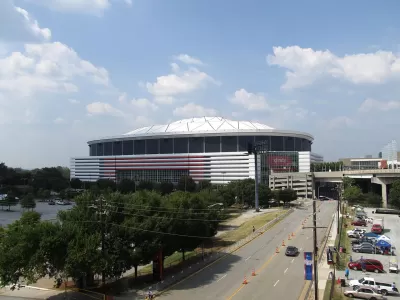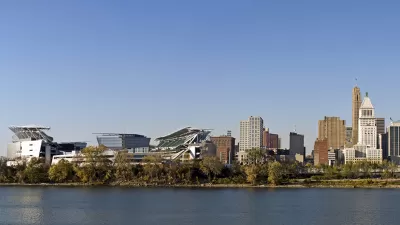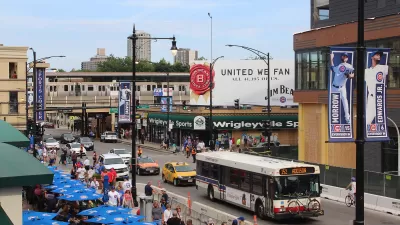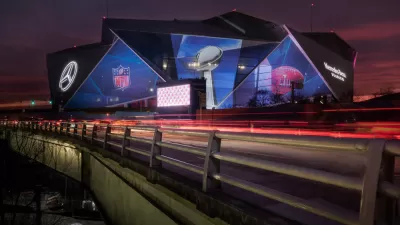In Atlanta—and throughout the country—city politicians have proven willing and eager to support stadium construction. But though these facilities are marketed as economic drivers, they often cause steep declines instead.

Stadium construction often depends on public funds and a good dose of city pride. "And yet the consensus among economists says that the public rarely profits from these massive investments, despite persistent claims by politicians and heads of chambers of commerce that stadiums and their ilk generate economic growth."
Atlanta's history of public investment in stadiums calls their "benefits" into question. "In Atlanta, four stadiums––two for baseball and two for football––have [...] actually contributed significantly to the de-development of what were once thriving middle and working class Black communities."
Lacking political visibility, communities around planned stadiums find it difficult to oppose the projects. The Atlanta-Fulton County Stadium, for example, was "paid for with parks and recreation tax dollars and built on land taken from owners through a federal urban renewal program. Construction of the Atlanta-Fulton County Stadium wiped out an entire neighborhood [...]"
When a new stadium appears, the surrounding neighborhood can become mere support structure. "Even after construction was completed, many people were displaced as landlords found it more profitable to evict families, tear down houses, and operate ad hoc parking lots where homes used to be. And once construction jobs dried up what was left were low-paying service industry jobs."

Planetizen Federal Action Tracker
A weekly monitor of how Trump’s orders and actions are impacting planners and planning in America.

Congressman Proposes Bill to Rename DC Metro “Trump Train”
The Make Autorail Great Again Act would withhold federal funding to the system until the Washington Metropolitan Area Transit Authority (WMATA), rebrands as the Washington Metropolitan Authority for Greater Access (WMAGA).

The Simple Legislative Tool Transforming Vacant Downtowns
In California, Michigan and Georgia, an easy win is bringing dollars — and delight — back to city centers.

The States Losing Rural Delivery Rooms at an Alarming Pace
In some states, as few as 9% of rural hospitals still deliver babies. As a result, rising pre-term births, no adequate pre-term care and "harrowing" close calls are a growing reality.

The Small South Asian Republic Going all in on EVs
Thanks to one simple policy change less than five years ago, 65% of new cars in this Himalayan country are now electric.

DC Backpedals on Bike Lane Protection, Swaps Barriers for Paint
Citing aesthetic concerns, the city is removing the concrete barriers and flexposts that once separated Arizona Avenue cyclists from motor vehicles.
Urban Design for Planners 1: Software Tools
This six-course series explores essential urban design concepts using open source software and equips planners with the tools they need to participate fully in the urban design process.
Planning for Universal Design
Learn the tools for implementing Universal Design in planning regulations.
Smith Gee Studio
City of Charlotte
City of Camden Redevelopment Agency
City of Astoria
Transportation Research & Education Center (TREC) at Portland State University
US High Speed Rail Association
City of Camden Redevelopment Agency
Municipality of Princeton (NJ)





























